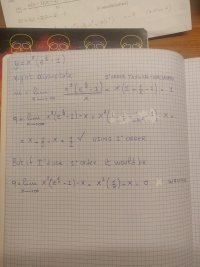Hi guys I was doing this exercise when I noticed that if use taylor developments at first order or second order I find different asymptote lines, in this function I was supposed to find x + 1/2 as asymptote, but how do I understand which taylor order should I use to find the correct asymptote ? Thank you if you can help me and sorry if my english is bad .
I got the same results if I immediatly calculate the asymptote for the general function, depending if I use the first or second order

I got the same results if I immediatly calculate the asymptote for the general function, depending if I use the first or second order

